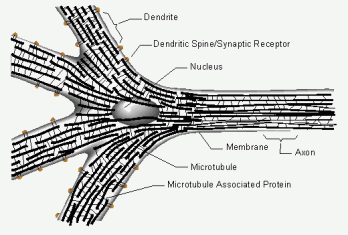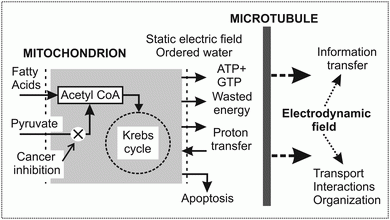The feasibility of coherent energy transfer in microtubules - Travis Craddock et al, Nova Southeastern University - http://arxiv.org/abs/1405.3170

Recent experiments have shown that thermal energy may boost rather than disrupt quantum coherence, particularly in the 'dry' hydrophobic interiors of biomolecules. Quantum coherence is involved in the activity of chromophores in the light-harvesting complexes of photosynthesis. The tubulin proteins that form microtubules are made up of the same type of aromatic amino acids, such as tryptophan, that comprise the chromophores in photosynthetic light-harvesting systems. The geometry and dipolar properties of tubulins are similar to those found in the photosynthetic light-harvesting systems.
Over the last decade, research has demonstrated the efficacy of quantum features in biological systems. Quantum coherence in photosynthesis, magnoreception in birds, and quantum features in olfaction and vision have all been identified. However, the greatest amount of research attention has been concentrated on quantum coherence in photosynthesis, with quantum features found to function at room temperatures and in plants as well as bacteria and algae.
The light-absorbing nature of chlorophyl molecules allows light (photon) energy to be taken from the environment into the photosynthetic reaction centre. This involves photons passing from chromophore to chromophore. The first excited chromophore can donate its electronic energy to an acceptor chromophore as a result of electrical attraction between dipoles. The system depends on the optimal packing of chromphores and dipoles.

Microtubules appear to be more favourable to quantum energy transfer than other parts of the cytoskeleton because they have more than three times the amount of tryptophan molecules found in other parts of the cytoskeleton; further to that the distances between tryptophan clusters in other areas of the cytoskeleton appear too large. The author is therefore inclined to focus attention on the tryptophan network within tubulin dimers where dipolar coupling could support quantum coherence similar to that discovered in the FMO photosynthetic complex.